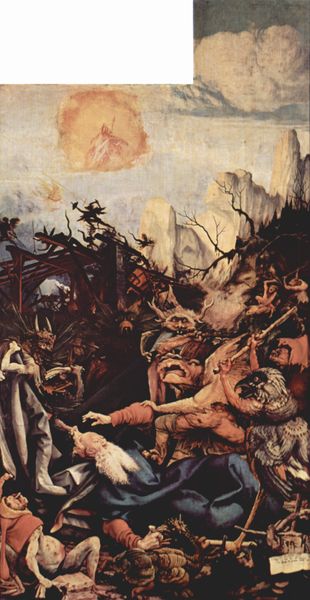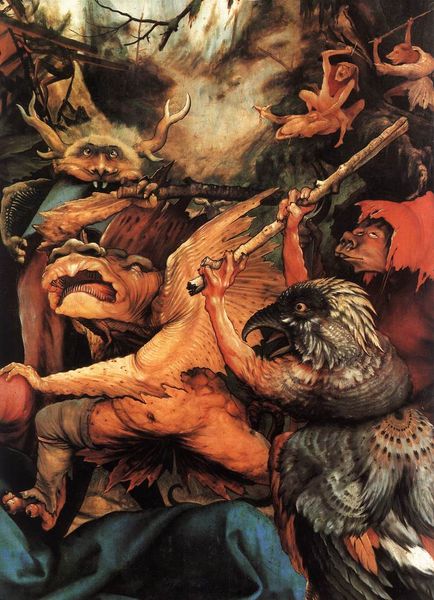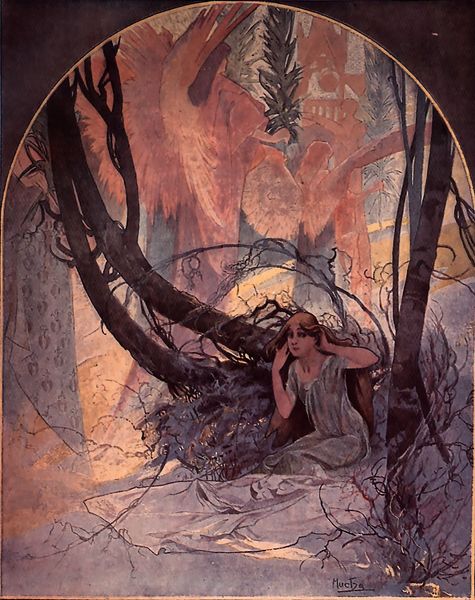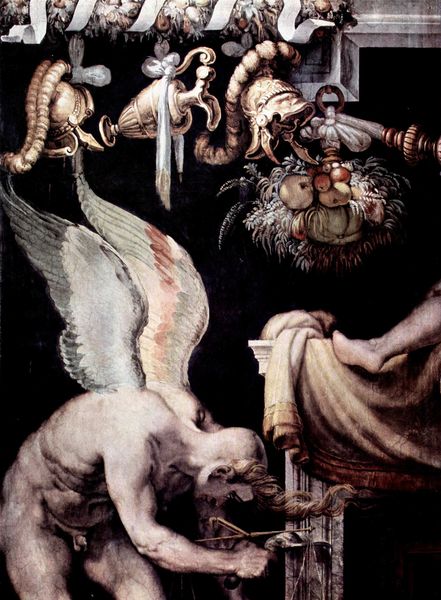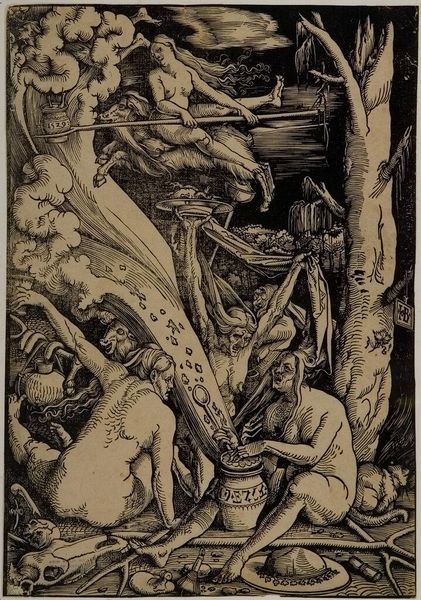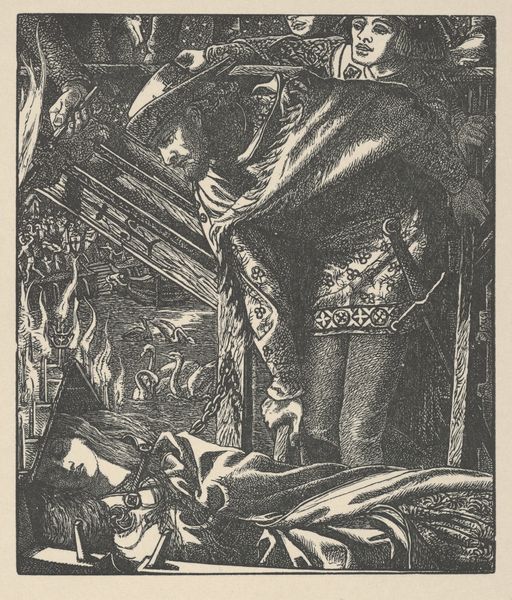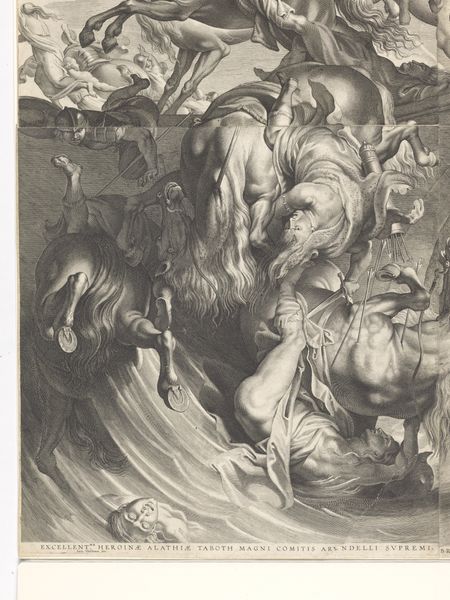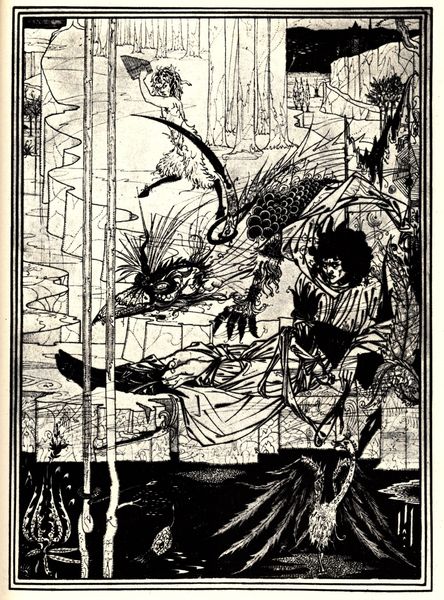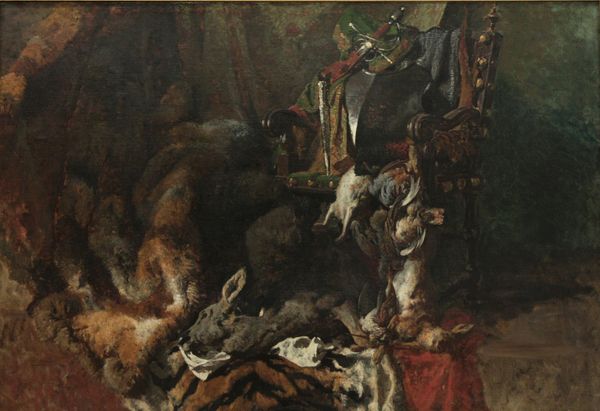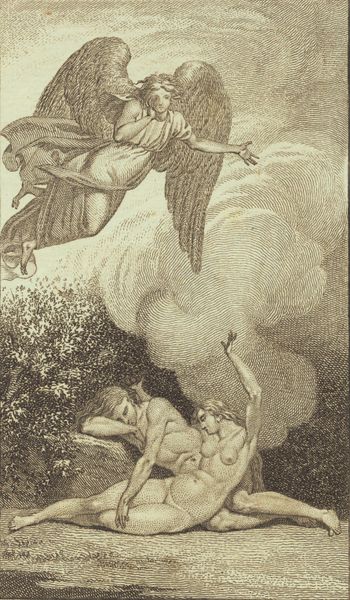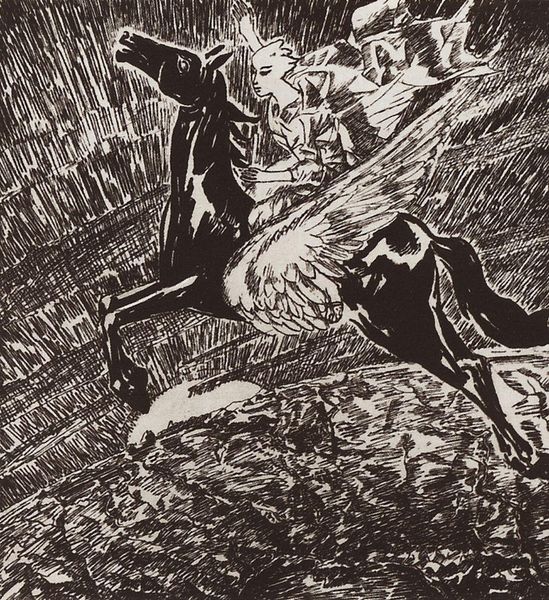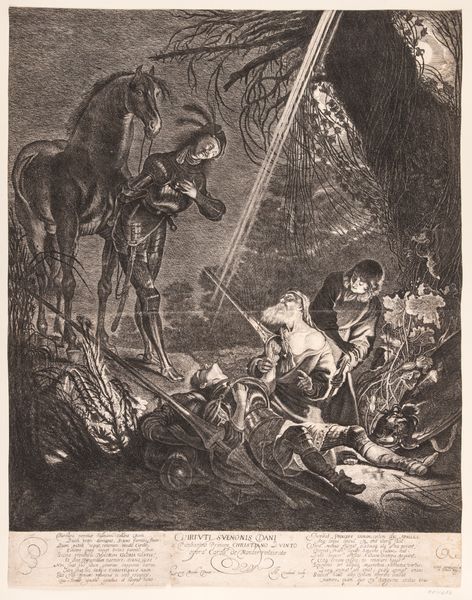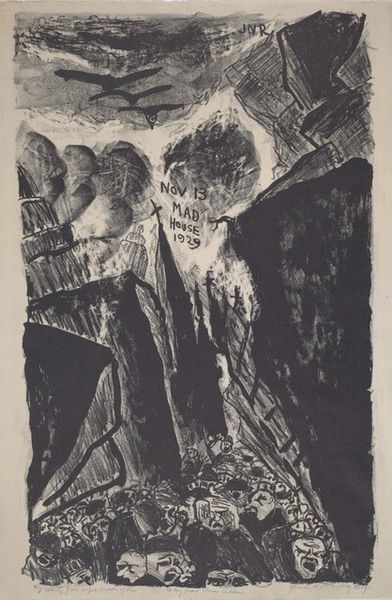
The Temptation of St. Anthony (detail) 1516
0:00
0:00
matthiasgrunewald
Musée Unterlinden, Colmar, France
Copyright: Public domain
Curator: My initial reaction? Nightmarish. This section of Matthias Grünewald’s “The Temptation of St. Anthony," painted around 1516, feels overwhelmingly chaotic. The distortions! Editor: Grünewald was hardly alone in portraying St. Anthony’s trials. This theme resonated profoundly in an era grappling with societal anxieties and religious fervor, particularly in regions impacted by the plague and ergotism—what some think was "St. Anthony’s Fire." Curator: Fire indeed! I'm seeing these grotesque figures… Their distorted bodies seem to writhe in agony. What visual language is he speaking? It's all so unnerving! Editor: Symbolically, the grotesque figures embody spiritual and physical afflictions. Grünewald draws upon familiar iconographic motifs of demons as physical manifestations of inner torment and temptation. He understood the power of visual horror. Curator: Absolutely. Consider, too, that this piece resided within the Isenheim Altarpiece, originally housed in a hospital. So, patients would have been faced with this. Its visual power meant to both terrify and offer a potent message. Editor: Ah, precisely. The intended audience matters. The grotesque imagery, rather than merely frightening, offers a visual conduit for their own suffering. By facing such horror, sufferers find empathy in Saint Anthony’s own plight and therefore a symbol of strength. Note how the illness is written across the skin in so many places. Curator: It's almost… performative, a dramatic staging of human suffering under pressure, wouldn't you agree? You said ergotism earlier: what is remarkable here is how the body manifests the mental. Editor: In total agreement. Look at Saint Anthony’s face. A picture of exhausted fortitude that would resonate even now. To reflect on Grünewald is to consider both a terrifying representation of his moment, and also ours. Curator: It feels deeply relevant—the timeless quality of inner battles projected outward, visualized for the masses, hasn’t gone anywhere. And this brings with it great hope.
Comments
No comments
Be the first to comment and join the conversation on the ultimate creative platform.
